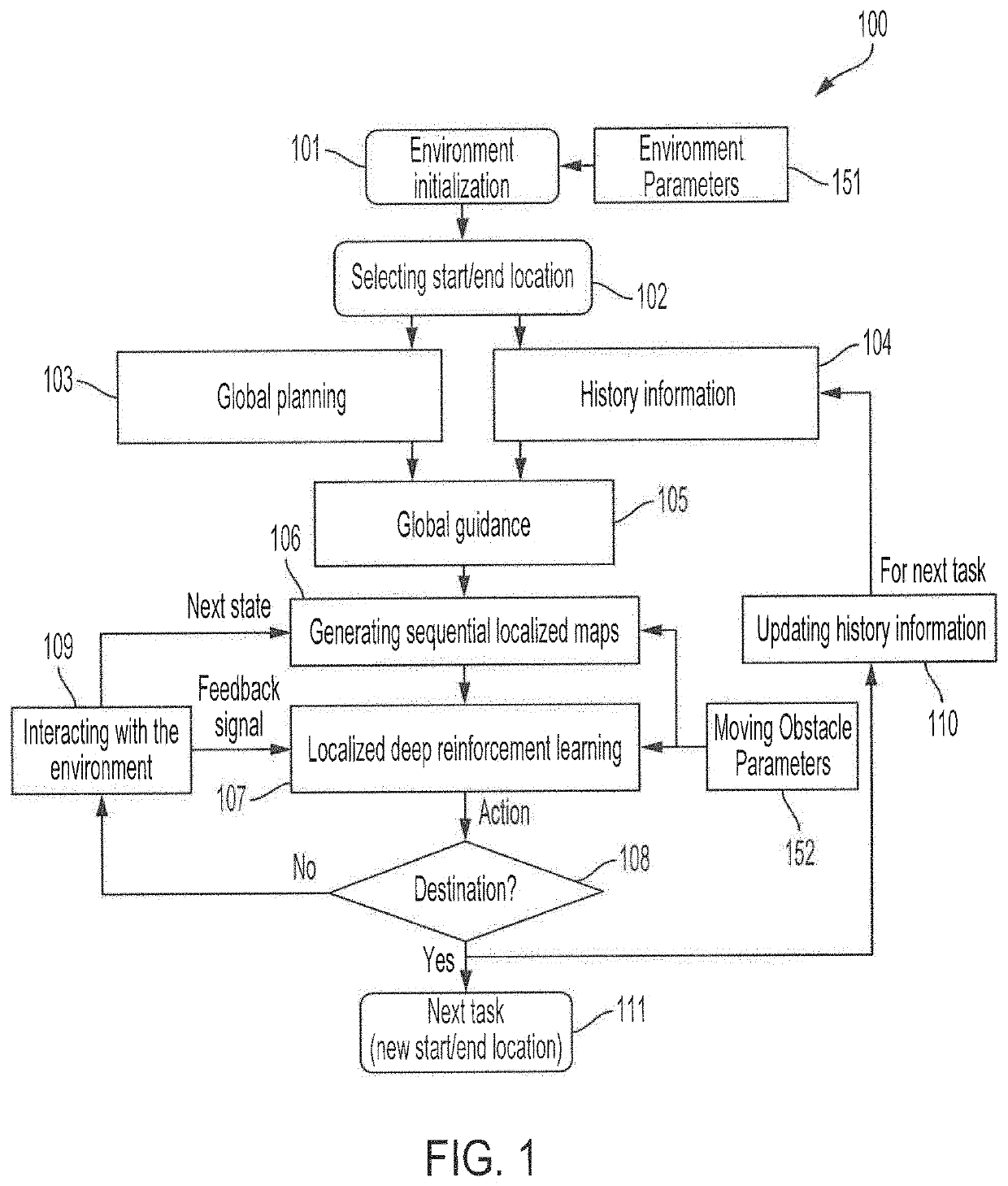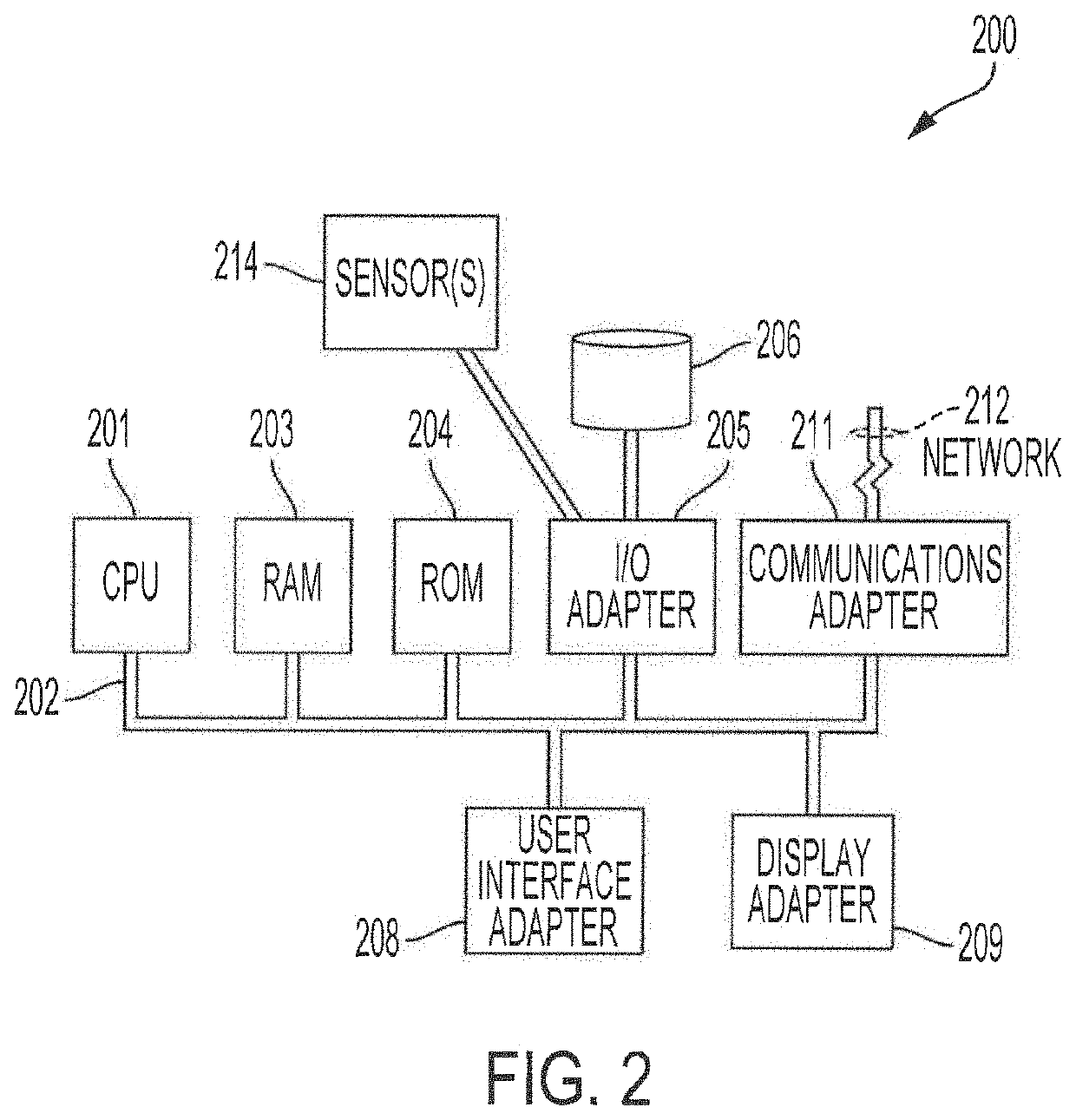Systems and methods for adaptive path planning
a technology of adaptive path planning and path planning, applied in the direction of vehicle position/course/altitude control, process and machine control, instruments, etc., can solve the problems of affecting the completion of time-critical tasks, and pre-planning becoming obsolete, so as to avoid frequent traffic conflicts, and reduce computation costs
- Summary
- Abstract
- Description
- Claims
- Application Information
AI Technical Summary
Benefits of technology
Problems solved by technology
Method used
Image
Examples
Embodiment Construction
[0023]FIG. 1 shows a flow diagram providing operation according to an adaptive path planning technique utilizing localized learning with global planning according to concepts of the present invention. In particular, and as will be described in further detail below, flow 100 of FIG. 1 provides an exemplary embodiment of adaptive path planning utilizing local learning with global planning to provide global guidance and perform local planning based on localized learning. In operation according to embodiments of flow 100, a planned path through a dynamic environment from a start location to a selected destination is provided with respect to an automated vehicle (AV), such as a self-piloted car, robotic delivery vehicle, automated guided vehicle (AGV), a drone, an unmanned aerial vehicle (UAV), etc., operating in the dynamic environment. An AV for which a particular instance of path planning and / or guidance is provided by an adaptive path planning technique of embodiments of the inventio...
PUM
 Login to View More
Login to View More Abstract
Description
Claims
Application Information
 Login to View More
Login to View More - R&D
- Intellectual Property
- Life Sciences
- Materials
- Tech Scout
- Unparalleled Data Quality
- Higher Quality Content
- 60% Fewer Hallucinations
Browse by: Latest US Patents, China's latest patents, Technical Efficacy Thesaurus, Application Domain, Technology Topic, Popular Technical Reports.
© 2025 PatSnap. All rights reserved.Legal|Privacy policy|Modern Slavery Act Transparency Statement|Sitemap|About US| Contact US: help@patsnap.com



